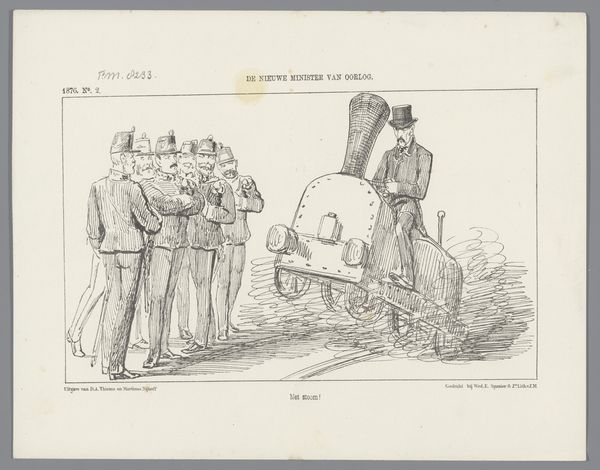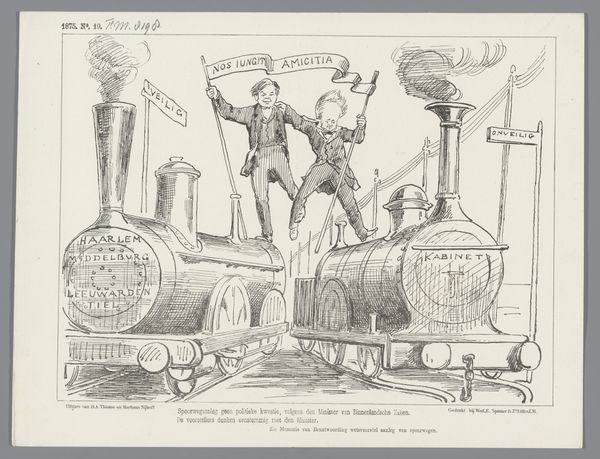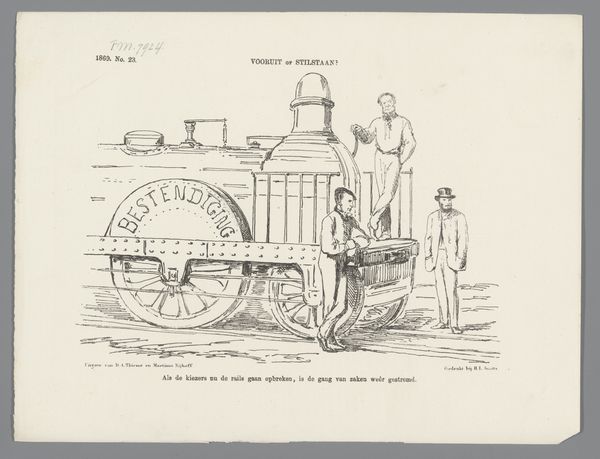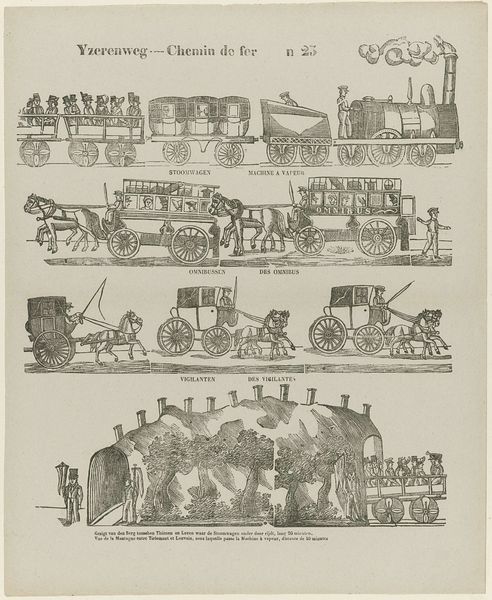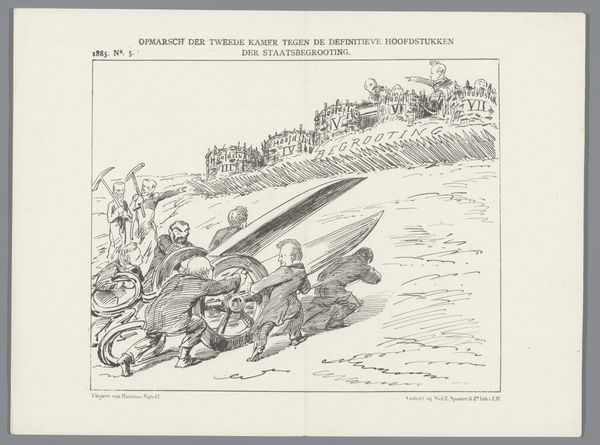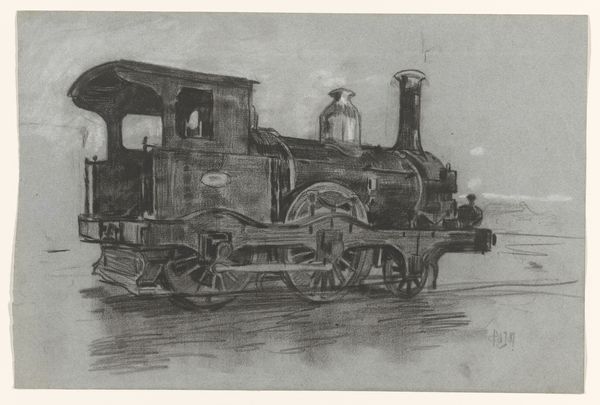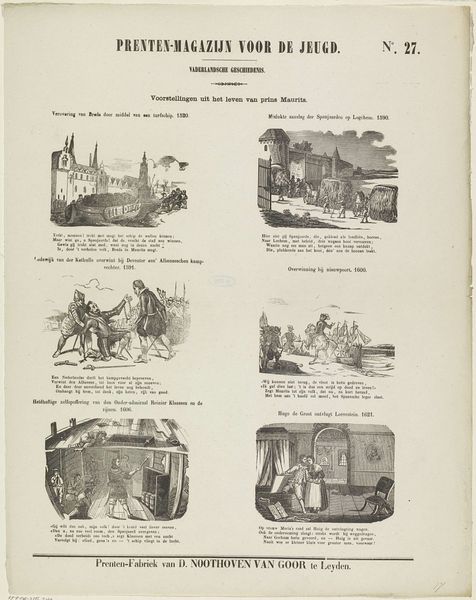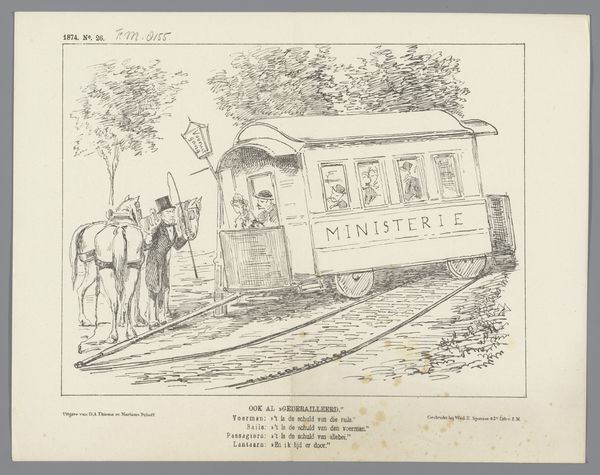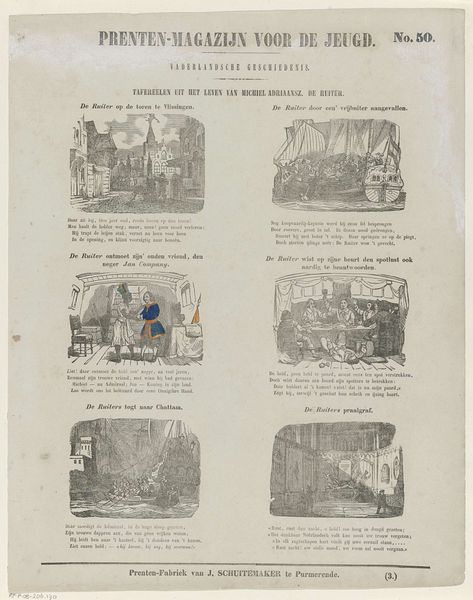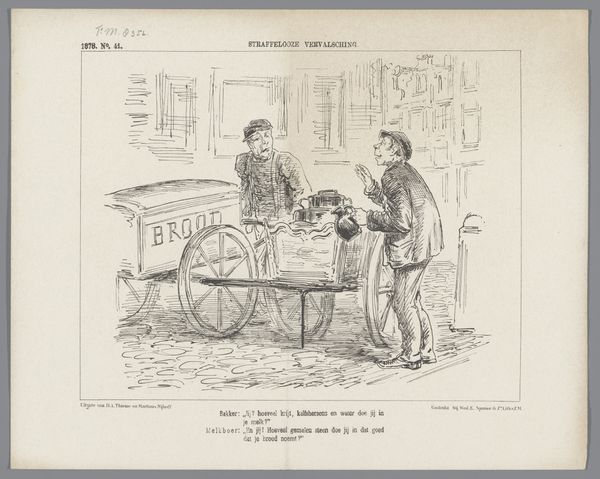
lithograph, print
#
narrative-art
#
dutch-golden-age
#
lithograph
# print
#
caricature
#
line
#
cityscape
#
realism
Dimensions: height 215 mm, width 275 mm
Copyright: Rijks Museum: Open Domain
Editor: Here we have a lithograph from 1884 titled "Spotprent op de Transvaalse spoorweglening," which translates to "Cartoon on the Transvaal Railway Loan" by Johan Michaël Schmidt Crans. It's quite satirical, with these figures standing in front of a bizarre-looking train. How do you interpret this work? Curator: This image offers a fascinating lens through which to examine Dutch colonialism and its critique. It’s a caricature, clearly, commenting on the Transvaal Railway Loan. Look at the train itself; it's overloaded with "goodies" and symbolic items. What do you think those represent in the context of colonial exploitation? Editor: I see labels like "Bible," bottles, and flags. It feels like a critique of how religion and national pride were used to justify economic exploitation, with the "goodies" maybe representing the wealth being extracted. Is that close? Curator: Absolutely. And the "Framsyjaat" inscription, which sounds like 'Franse-chica' from a contemporary understanding, maybe references European involvement in and benefit from this endeavor. Consider, also, that critiques of colonialism often came from within the colonizing countries themselves, reflecting internal tensions and debates about national identity and morality. Does that perspective shift your understanding of the image's purpose? Editor: Definitely. It’s not just a simple condemnation, but a complex commentary reflecting internal struggles with colonial policies. I hadn’t considered that level of nuance. Curator: Exactly. Cartoons like these were powerful tools for shaping public opinion and challenging dominant narratives. It makes you wonder about the artist's own social and political position, and the audiences they hoped to reach with this piece. Editor: That's incredibly insightful. Thanks for helping me to see it with that framework!
Comments
No comments
Be the first to comment and join the conversation on the ultimate creative platform.
